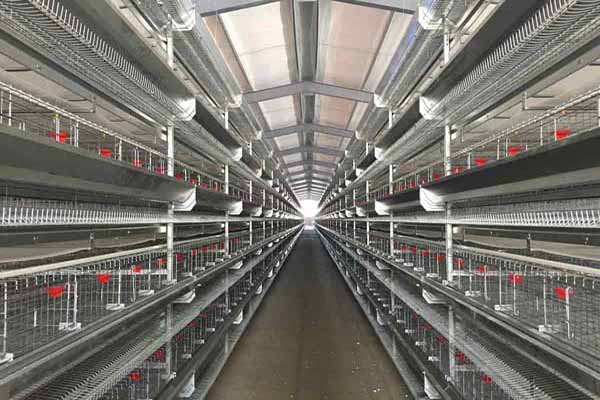Uganda’s Large Chicken Farm Embraces Innovation with an Automated Feeding System
Time : 2025-06-29
In the heart of Uganda, a large chicken farm has revolutionized its operations by integrating an automated feeding system. This move towards modernization is not just a sign of progress but a testament to the power of technology in transforming the poultry industry. This article delves into the details of the automated feeding system at the farm, its benefits, and the implications it has for the industry as a whole.
—
Introduction to the Automated Feeding System
The automated feeding system at Uganda’s large chicken farm is a sophisticated piece of equipment designed to optimize the feeding process. This system is integrated into the farm’s infrastructure and is managed through a central control unit that ensures each chicken is fed the right amount of feed at the right time.
The system uses sensors and programmable logic controllers (PLCs) to monitor the feeding process. It is capable of adjusting the feeding rate based on the specific nutritional needs of the chickens, ensuring they are healthy and productive.
—
The Technology Behind the Automated Feeding System
The heart of the automated feeding system is its technological components. Let’s take a closer look at some of the key technologies used:
Feed Hopper and Feed Distributor
The feed hopper is the storage unit where the feed is kept. It is designed to hold a large quantity of feed to minimize refilling intervals. The feed distributor, on the other hand, is responsible for moving the feed from the hopper to the feeders.
The distributor is equipped with a conveyor belt or a screw mechanism that ensures a consistent flow of feed to the feeders.
Sensors and PLCs
The system is equipped with sensors that detect the level of feed in the hopper, the number of chickens at the feeders, and the feeding rate. These sensors send data to the PLC, which processes the information and makes adjustments to the feeding rate as needed.
Human-Machine Interface (HMI)
The HMI is the user interface through which the farm manager can monitor and control the feeding system. It provides real-time data on the system’s performance and allows for remote adjustments.
—
Benefits of the Automated Feeding System
The implementation of an automated feeding system at the Uganda large chicken farm has brought about several significant benefits:
Improved Productivity
The system ensures that each chicken receives the right amount of feed, which improves growth rates and overall productivity. By automating the feeding process, the farm is able to produce more chickens in less time.
Cost Efficiency
By reducing the need for manual feeding, the farm saves on labor costs. Additionally, the precise control over feed allocation minimizes waste and reduces feed costs.
Enhanced Animal Welfare
The automated feeding system provides a consistent and timely feeding routine, which is essential for the health and well-being of the chickens. This helps in reducing stress and improving the overall quality of life for the birds.
—
Case Study: The Uganda Large Chicken Farm
To understand the practical implications of the automated feeding system, let’s examine a case study of the Uganda large chicken farm.
The farm, which houses over 100,000 chickens, was struggling with inefficient feeding methods. The traditional feeding process was labor-intensive, prone to errors, and resulted in inconsistencies in feed allocation.
After implementing the automated feeding system, the farm experienced a dramatic improvement in productivity. The growth rate of the chickens increased by 15%, and the farm was able to reduce its labor costs by 20%.
Moreover, the farm noticed a significant reduction in feed waste, which further contributed to cost savings.
—
Conclusion
The automated feeding system at Uganda’s large chicken farm is a shining example of how technology can transform the poultry industry. By improving productivity, reducing costs, and enhancing animal welfare, this system is set to become a standard in the industry.
As the poultry industry continues to evolve, it is crucial for farms to embrace technological advancements like the automated feeding system to stay competitive and sustainable.
—












